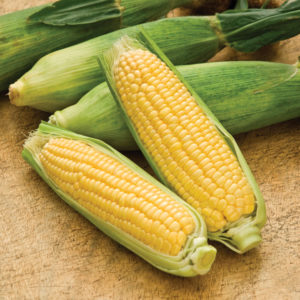 Grain futures were mixed on Wednesday with wheat and soybeans declining, while corn rebounded from yesterdays three-year low on concern dry weather and frost may damage crops.
Grain futures were mixed on Wednesday with wheat and soybeans declining, while corn rebounded from yesterdays three-year low on concern dry weather and frost may damage crops.
On the Chicago Board of Trade, corn futures for September delivery traded at $4.5650 per bushel at 9:42 GMT, up 0.11% on the day. Prices held in range between days high and low of $4.5888 and $4.5513 a bushel respectively. The grain fell to a three-year low of $4.5438 per bushel on Tuesday and plunged 3.5% on the day, extending current weeks decline to 1.8% after shedding 5.5% in the previous two weeks.
Corn fell to a three-year low on Tuesday as the USDA trimmed its U.S. corn output forecast to 13.763 billion bushels on Monday, 1.3% below its July estimate at 13.950 billion and also less than the 14.036 billion forecast by a Bloomberg survey. Yields are also expected to be lower with the government agency cutting its expectations for 154.4 bushels per acre, which is below last month’s estimate at 156.5 bushels and analysts’ expectations for a 157.7 bushels-per-acre yield. Stockpiles are also poised to drop and will equal 1.837 billion bushels, 6% below July’s 1.959 billion projections.
Prices however marked a moderate rebound on Wednesday amid concern over potential damage to the crop. DTN said yesterday that little rain is expected in the west and central areas of the Midwest. According to Michael Cordonnier, president and owner of crop analyst Soybean & Corn Advisor Inc., late-sown corn in the northern and northwestern Corn Belt, whose development was delayed due to heavy rains, is at risk of frost damage.
However, corn is not expected to continue rising too high as corn output is still expected to be record high. Paul Deane, an agricultural economist at Australia & New Zealand Banking Group Ltd. in Melbourne, said for Bloomberg: “It’s chopping around here but will probably make further lows over the next weeks or months. The market’s not really too concerned by the USDA cutting the U.S. corn yield.”
The USDA said in its crop progress report on Monday that corn crop condition was the same like a week earlier and a lot better than last year’s drought damaged crop. As of August 11, 11% of the plants were rated very poor-poor, compared to 51% in 2012. Meanwhile, 25% of the crop was categorized as “Fair”, below last year’s 26%. As for the premium quality, 64% was rated good-excellent, well above the previous year’s 23%.
Soybeans decline
Meanwhile, soybeans declined over 1% and traded at $12.4488 per bushel at 9:47 GMT, down 1.01%. Futures held in range between days high and low of $12.5963 and $12.4575 per bushel respectively. The oilseed rose 0.11% on Tuesday and 3.02% on Monday, its biggest daily gain since June 2012, extending current weeks advance to 2.1% so far.
Soybeans advanced in the last couple of days after the U.S. Department of Agriculture trimmed its soybean production forecast to 3.255 billion bushels on Monday, 5% below July’s 3.42 billion estimate. Yields expectations were also reduced and now stood at 42.6 bushels per acre, below the previous reading of 44.5 bushels and analysts’ projections for a 43.6 output per acre.
In its crop progress report, the government agency said soybean blooming fell a bit behind the five-year pace. As of August 11, 88% of the plants were in the blooming stage, marking a 9% advanced from the previous week but 4% below the five-year average and 8% behind last year’s readings.
As for the plants condition, the USDA said it was almost the same as last week and a lot better than the previous year. Nine percent of the crop was rated very poor-poor, compared to 38% a year earlier. Meanwhile, 27% was categorized as “Fair”, below last year’s 32%. As for the premium quality, 64% of the crop fell in the “Good” and “Excellent” categories, well above 2012′s 30%.
Wheat at 14-month low
Meanwhile, wheat fell to the lowest since June 2012. September futures stood at $6.2588 per bushel at 9:45 GMT, down 0.24% on the day. Prices held in range between days high at $6.2900 and low of $6.2663 per bushel, the lowest since the week ending June 17, 2012. The grain slipped 1.22% on Tuesday, extending current weeks fall to 1.2% after declining 4% in the preceding five-day period.
Wheat was pressured throughout the week as the USDA kept its U.S. wheat crop forecast unchanged at 2.114 billion bushels, while global production is still expected to reach an all-time record high of 705.4 million tons.
Wheat prices received a little boost on Monday as the USDA reported that spring wheat harvesting fell well behind last year’s pace. As of August 11, only 6% of the spring wheat crop was reaped, compared to the five-year average pace of 24% and last year’s 61% during the comparable week. However, winter wheat harvesting was 1% above the average speed at 92% and 2% below last year’s 94%. An advance of 5% from the preceding week’s 87% was made.
As for the spring wheat condition, the USDA reported it was generally the same like the previous seven-day period, and a bit better compared to last year. As of August 11, 8% of the crop was rated very poor-poor, compared to 11% in 2012. Meanwhile, 26% of the plants were categorized as “Fair”, 2% below the same week last year. As for the premium quality, 66% was rated good-excellent, compared to 61% a year earlier.





